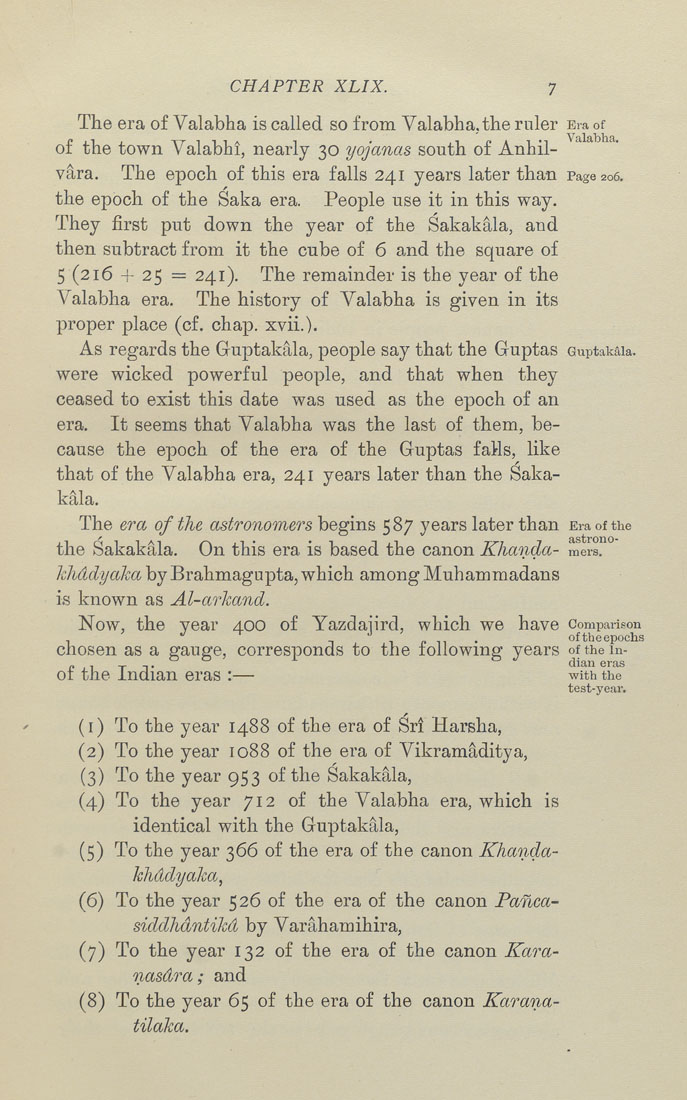CHAPTER XLIX. 7
The era of Valabha is called so from Valabha.the ruler Era of
of the town Valabhi, nearly 30 yojanas south of Anhil-
vara. The epoch of this era falls 241 years later than Page 206.
the epoch of the Saka era. People use it in this way.
They first put down the year of the Sakakala, and
then subtract from it the cube of 6 and the square of
5 (216 + 25 = 241). The remainder is the year of the
Valabha era. The history of Valabha is given in its
proper place (cf. chap. xvii.).
As regards the Guptakala, people say that the Guptas Guptakaia.
were wicked powerful people, and that when they
ceased to exist this date was used as the epoch of an
era. It seems that Valabha was the last of them, be¬
cause the epoch of the era of the Guptas fails, like
that of the Valabha era, 241 years later than the Saka¬
kala.
The era of the astronomers hegina 587 years later than Era of the
the Sakakala. On this era is based the canon Khanda- mers.
/i;M(i;ya7i;a. by Brahmagupta, which among Muhammadans
is known as Al-arkand.
Now, the year 400 of Yazdajird, which we have Comparison
chosen as a efauge, corresponds to the following years of the in-
„ , -^ ,. ^ =• ^ ^ -^ dianeras
or the Indian eras :— with the
test-year.
(i) To the year 1488 of the era of Sri Harsha,
(2) To the year 1088 of the era of Vikramaditya,
(3) To the year 953 of the Sakakala,
(4) To the year 712 of the Valabha era, which is
identical with the Guptakala,
(5) To the year 366 of the era of the canon Khanda-
khddyaka,,
(6) To the year 526 of the era of the canon Panca-
siddhdntikd by Varahamihira,
(7) To the year 132 of the era of the canon Kara-
nasdra; and
(8) To the year 65 of the era of the canon Karana-
tilaka.
|








